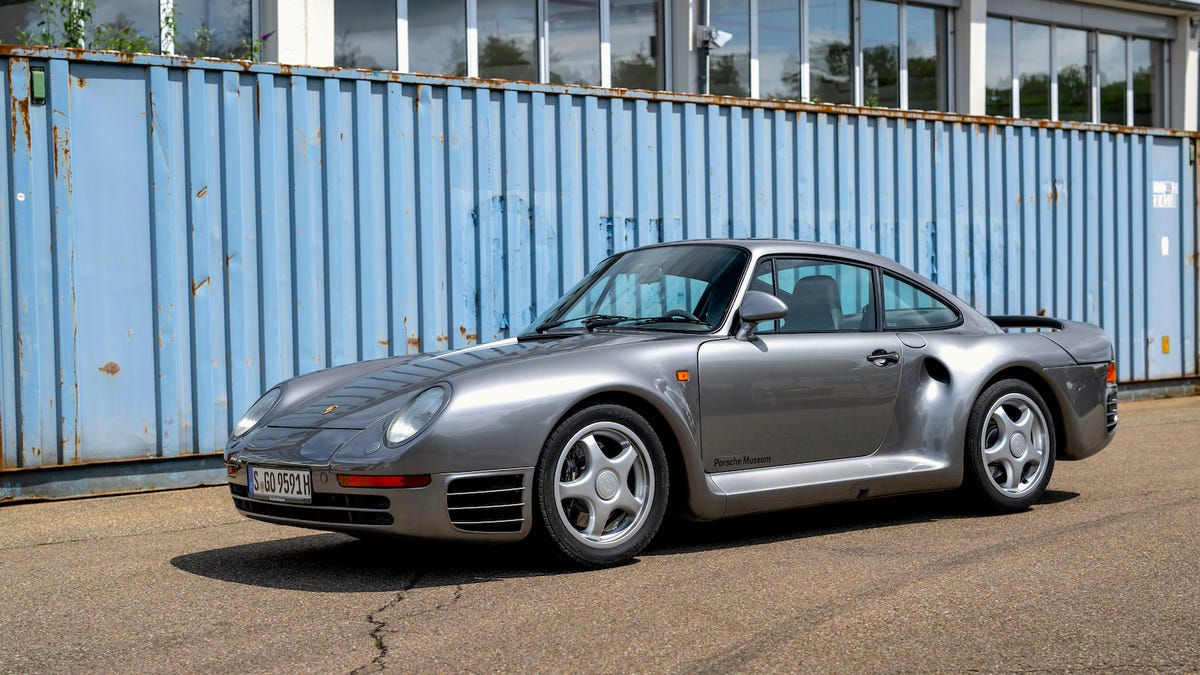“I’ve seen things you people wouldn’t believe.”
The Porsche 959 is a grail car. Legitimately. It’s rare, technologically incredible, even almost 40 years after its debut; it’s fast, too, and I never thought I’d get to drive one. Not in a million years. Like, I’d stand a better chance of dying, being fossilized and then turned into crude oil and being processed into gasoline that’s put into a 959 than actually driving one. Then, weirdly, Porsche asked me if I wanted to drive one that it’s owned since it was new.
I said “Yeah.”
To understand why the 959 is so important from a historical perspective, I find it’s easier to think of it as a concept car that went into production than a production car. Not only did it offer us a preview of future Porsche styling, but it showed where the brand was going with technology. The 959 showed us center lock wheels, height-adjustable air suspension, all-wheel drive, a (partially) water-cooled flat-six and more. People compare the 959 to the F40, but by comparison, the F40 is an axe swinging barbarian (but still cool, obvs).
The 2.8-liter sequentially turbocharged flat-six in the 959 has water-cooled cylinder heads (tech borrowed from the 962 race car) and produces 444 horsepower and 369 pound-feet of torque. The way that power is delivered is unique to the 959, too, because of those staged sequential turbos. The first small turbocharger kicks in low in the rev range to make the car feel quick off the line and responsive. That turbo eventually phases out, and the much larger second-stage turbo kicks in. When it does, the car’s acceleration feels like you’ve just punched the Millennium Falcon into hyperspace. More on that later.
The 959’s incredible engine is bolted to a six-speed manual transmission, but predictably, not a normal one. Instead of being labeled 1-2-3-4-5-6, the car has five numbered gears and a low gear labeled “G” for gelande, which is German for terrain. It works like a short first gear, but the car is fine being started in first. The transmission is mated to an all-wheel drive system, which has selectable torque bias from inside the cabin. That feature would later be seen in the 964-generation 911 Carrera 4.
The 959 also has air suspension, which is automatically height-adjusted for aerodynamics. Changing the ride height offers three pre-sets with around 2.3 inches of difference between the lowest and highest settings. The suspension firmness is also adjustable from the driver’s seat.
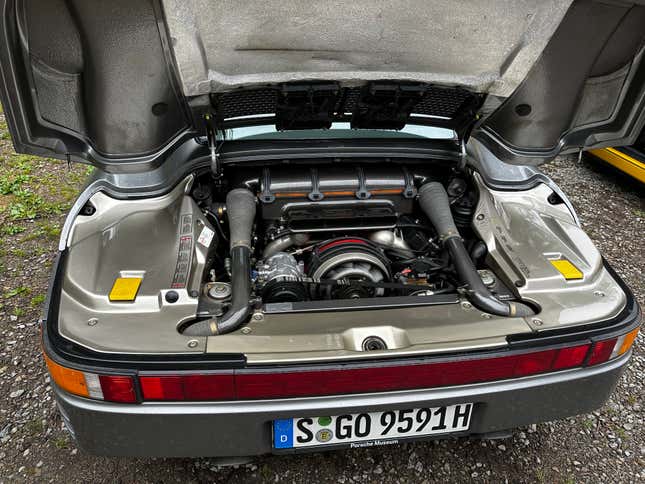
Obviously, the lowest height setting is designed for high-speed driving and is meant to reduce drag, but interestingly, so was the rest of the 959’s somewhat polarizing-looking Kevlar body. Porsche’s engineers were so interested in reducing drag that the body created almost no downforce. The car was never particularly successful in road racing, with only one built for track use.
The interior of the 959 is more or less the same as the contemporary 911 of the period, with a few exceptions. The gauge layout is different, thanks to added warning lights and a really awesome analog gauge showing torque split. There is also a water temperature gauge for the cylinder heads. As previously mentioned, the center console features knobs to control suspension firmness and height, as well as a defrost button, hazard button and a janky digital clock.
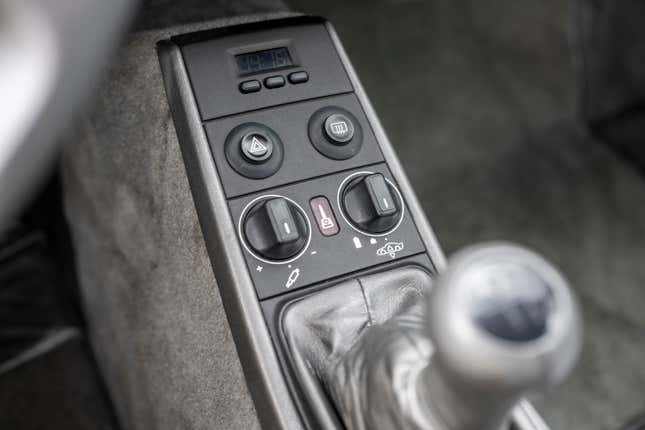
Many 959 models came without leather interiors, and this is the case for Porsche’s museum car, to which I’ve been handed the key. The fabric seats on this 959 are several shades of gray, and the rest of the interior is also very, very gray. It’s small inside, as you would expect from a 1980s 911, but the cockpit is still a nice place to be, thanks to all the glass and the spaghetti-thin roof pillars.
Starting the 959 is pretty uneventful (unless you’re a jet-lagged hyper nerd like me and you get all emotional) and involves twisting a key on the left side of the steering wheel. Once started, the car settles into a normal flat-six idle. Putting the car in gear feels good relative to the normal G50 gearbox of the period, which was itself a huge upgrade over the 915 gearbox. The big difference comes when you try to use the clutch. That sumbitch is HEAVY. It’s there that it becomes clear just how different this car is from your average 3.2 Carrera. This clutch has to hold a lot of power, and it shows.
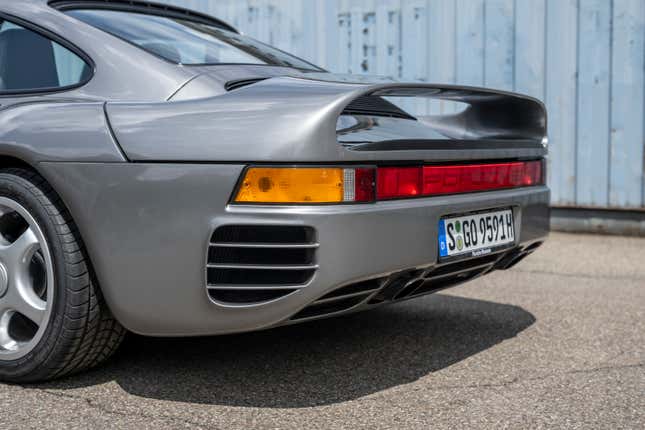
Setting off in first (rather than G) requires more throttle input than I expect, so I stall the car initially before being a little less precious and giving it a healthy dose of revs. Once moving, everything feels good. The car has been swapped between journalists all day, so it’s good and warm by the time I get it for the final drive back to Porsche’s secret warehouse.
Despite the heavily turbocharged nature of the car, that small first-stage turbo does a good job of making the 959 feel snappy and responsive at low speeds. It’s the antithesis of the 930, which is more or less dead before the turbo comes on at around 3,500 rpm. It doesn’t feel like a 2023 turbocharged car, but it’s not bad.
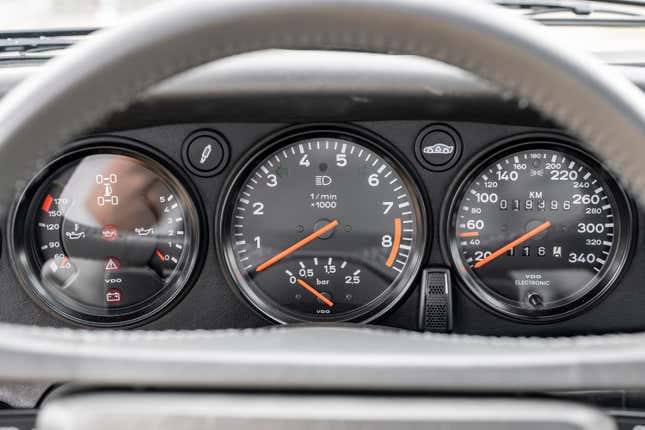
The 959’s low-speed handling feels more or less on-par for 911s of the period, too. The front end is very sharp and very communicative, but the 959 has considerably more weight over the front axle, so I suspect that it would require less babysitting to maintain grip than a lesser 911. As speeds increase, things begin to feel better. The car feels happier and smoother. The roads in the Black Forest are pretty decent but not autobahn-smooth, and the adjustable suspension does a good job of keeping things comfy.
As I get more comfortable in this priceless museum piece, I begin to enjoy the experience more, and I get to appreciate all the genius that Porsche’s engineers poured into this car. It’s clear that they really flexed all of their muscles to make this the absolute best car that they were capable of. That it was on the bleeding edge of technology in the 1980s is wild, given how normal it feels to drive.
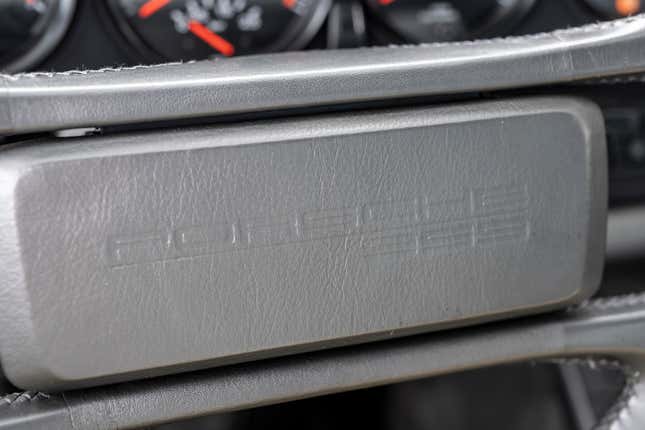
Then the road opens up somewhat, I give it some real throttle, and everything changes. The turbo noises — all whooshes and hisses — pair with the rising howl of that little flat-six as speed builds with shocking rapidity. The car still feels planted, but it’s clear that the sense of normalcy the car exudes is just a veneer. The 959 is an animal, albeit a very sophisticated one.
We make our way through a handful of tiny villages until we get back to the autobahn. I spend the time playing with the turbo, seeing how far I can push the first turbo before it runs out of puff and calls its big brother. The section of the autobahn onto which we’re dumped is de-restricted, and once I make it carefully to the left lane, with a stretch of clear road in front of me, I check the gauges, drop a gear and mat the gas.
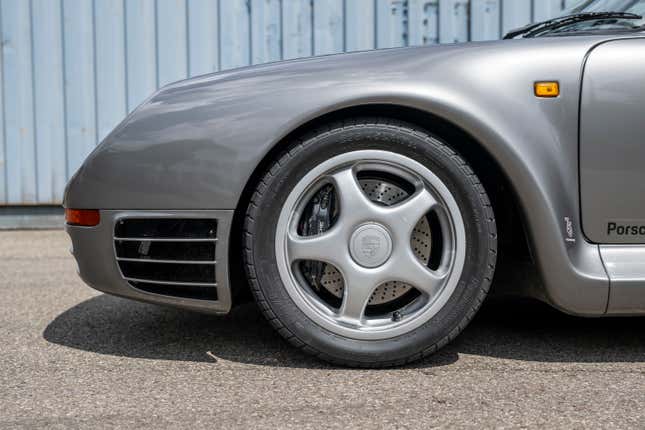
The engine starts to howl, the small turbo makes its presence felt, and then, finally, the changeover happens and the big turbo lights off. That hyperspace analogy I made earlier is as close as I can get to describing the experience because the way that the 959 builds speed on the big turbo feels like science fiction. I drive a lot of very fast cars, and this feels almost alien. I stay in it for a handful of seconds before I get out of the throttle and move over to the middle lane. This is, after all, a priceless museum car, and I’ll be damned if I’m going to break or damage it.
I don’t know how fast I went, and I suspect that whatever it ended up being was neither particularly crazy nor impressive by German standards, and that’s ok. Just getting the experience of driving this car at full throttle for a few seconds on a de-restricted autobahn is a grail experience.
It’s surely enough to earn it a permanent place on my personal “Like Tears In Rain” soliloquy, something I’ve been working on ever since I became a journalist, and maybe most importantly, it shows what kind of company Porsche is. It’s a company that has always made cars to be proud of and which are both good enough and robust enough to let journalists like me drive them and that sure beats the hell out of anything Roy Batty ever did.

